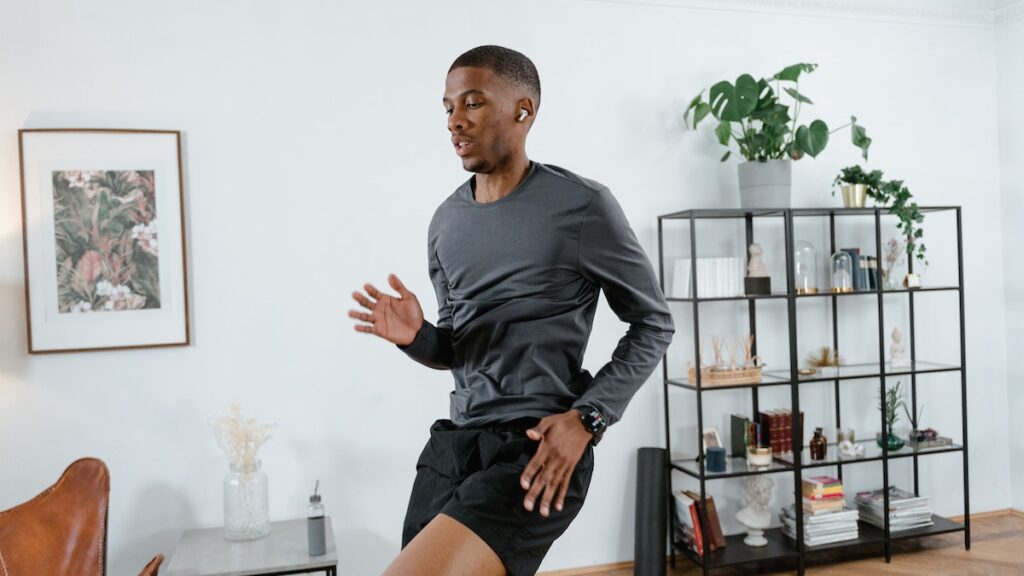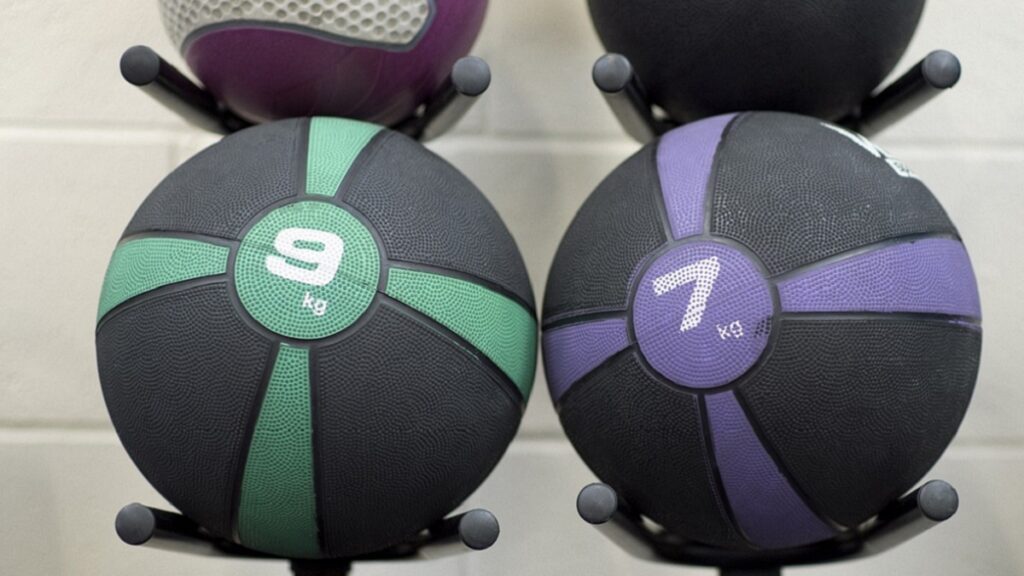Anaerobic exercises are powerful oxygen-independent workouts that help your body burn fat. The exercises involve short, fast, and high-intensity movements that increase your body’s agility and stigma and are ideal for overall health. Although similar to their aerobic counterparts, they have different energy levels. Which are the ultimate anaerobic exercises at home?
The ultimate anaerobic exercises you can do in the comfort of your home include high-intensity interval training (HIIT), Skipping or jumping rope, weight training, pull-ups, and push-ups, among other strength training options. The easy-to-do workouts break down glucose into energy without oxygen.
In this article, you’ll learn about the various anaerobic exercises you can try at home and keep your health in check. We’ll discuss their proper form, helpful tips, and their benefits to your body. Let’s get started.
Which Are the Ultimate Anaerobic Exercises at Home?
The ultimate anaerobic exercises you can perform at home include the following:
- High-intensity interval training (HIIT)
- Skipping or jumping rope
- Side-to-side lateral runs
- Mountain climbers
- Weight training
- Squat jumps
- Long jumps
- Plank jacks
- Push-ups
- Pull-ups
- Burpees
Let’s learn more about the above workouts. Keep reading.
1. High-Intensity Interval Training (HIIT)
HIIT is an interval training activity incorporating several rounds, alternating between several minutes of high-intensity movements. Typically, the workout transforms aerobic movements into anaerobic movements by alternating high episodes of exercises with rest periods.
Here are HIIT instructions:
- Select the activity (walking, running, biking, and so on) you’d like to perform.
- Experiment with different durations of workouts and recovery.
- Perform the required reps
2 . Weight Lifting
Lifting weight is one of the most popular anaerobic exercises at home. Sometimes you complete a whole exercise without realizing it, and it’s an effective workout. You can weightlift using dumbbells, flour bags, water bottles, or food tins.
Dumbbell exercises are an excellent option for your anaerobic exercises for working your shoulders, arms, chest, back, and legs. They’re considered anaerobic as they don’t use oxygen for energy but carbohydrates and fat. Hence, you don’t have to go to the gym for strength training workouts if you have dumbbells at home.
Moreover, ensure you use the correct form when lifting your weight to prevent injuries. Start with a few reps and sets and increase as you advance in endurance and performance. Also, you only need about 30 minutes with challenging weights to work all major muscles.
Here are the weightlifting instructions: Dumbbell Bench Press
- Sit on a flat bench holding dumbbells against your abdomen and thighs.
- Lie back on the bench carefully and lift them directly above your chest.
- Slowly and controllably lower your weights to slightly below your chest level and press them to full extension.
- Repeat for your desired reps and sit back with the weights against your abdomen and thighs.
3. Skipping or Jumping Rope
The exercise is one of the most straightforward anaerobic exercises at home. It’s a full-body workout that involves your legs and arm movements. Skipping or jumping rope improves your heart functioning, reduces the risk of diabetes, aids weight loss, and enhances body composition.
Additionally, the anaerobic exercise improves your endurance level, jumping ability, quickness, and athletic performance.
Here are the skipping/jumping rope instructions:
- Jog forward as you swing the rope over your head and below your feet for about 15 seconds.
- Reverse the move to jogging backward as you swing the rope for another 15 seconds.
- Complete the set by hopscotch jumping for about 15 seconds.
- Repeat 18 times with a 15 seconds break between sets.
The above workout duration applies to beginners. Intermediate trainers can have a 30-second performance with a 30-second inter-set rest. A 60 seconds performance is appropriate for the advanced lot, with a 60-second break between the sets.
4. Side-to-Side Lateral Runs
A side-to-side lateral run is a full-body workout that primarily works the lower body. It’s one of the anaerobic exercises at home that increases stamina, agility, and power to improve your overall muscular performance.
Here are side-to-side lateral run instructions:
- Stand with your feet more than shoulder-width distance apart.
- Keep your body facing forward and hop back and forth on your feet balls.
- Quickly move side to side, drive your inside knee up, and press with the other once you reach the end.
- Run laterally to the opposite side and repeat the movements for your desired reps.
- Perform with high intensity and recover.
5. Mountain Climbers
Also known as running planks, they’re among the straightforward anaerobic exercises at home you can add to your routine. They’re full-body movements but primarily focus on the shoulders, arms, core, and quads. Also, the workouts increase your heart rate.
As the name indicates, you’re simply ‘climbing a mountain,’ but on the floor in a plank position. It involves bringing one knee to the chest and back alternatively, speeding up progressively until you start ‘running’ on the mat.
Here are the mountain climbers instructions:
- Take a plank posture, evenly distributing your weight between your hands and toes.
- Ensure the correct form: Hands shoulder-width apart, abs engaged, back flat, and head aligned.
- Move your right knee toward your chest and back.
- Bring the left one to the chest and back.
Inhale as you pull the knee and exhale as you move it back. Avoid holding your breath, which is likely when focusing on the move. Also, keep your hips down and move your knees in and out as far as possible.
6. Squat Jumps
The exercises combine two activities, as the name indicates: squatting and jumping. They primarily target the lower body muscles, which improve oxygen supply by increasing blood flow. Also, since they’re dynamic power anaerobic exercises at home, you do a complete warm-up before you start.
Here are squat jumps instructions:
- Stand with your feet shoulder-width distant and slightly bend your knees.
- Bend your knee to take a full squat position.
- Engage your glutes, quads, and hamstrings as you propel your body and feet several inches off the floor.
- Return to the squat position controllably by pressing back your feet and with soft knees to have another explosive jump.
- Repeat the jump upon landing and continue for the desired rep.
7. Long Jumps
The anaerobic exercises at home are an ideal way to increase the intensity and add challenge to your workout program. They involve jumping forward as far as possible and landing with both feet. The exercise gets your core and heart working hard.
Land with soft knees to ensure the move’s safety. Also, you can try a staggering landing (landing with one foot before the other) if you’re comfortable and experience no pain. The move can be hard on your knees. Hence, you should initially ensure a landing with weight in your heels and short jumps.
Here are long jumps instructions:
- Position your feet together as you stand.
- Squat and jump forward as far as you can at a high intensity.
- Return to the squat position with bent knees to prevent joint injuries.
- Jump forward again and any other way around the room for 30-60 seconds.
8. Plank Jacks
The routine is among the anaerobic exercises at home, primarily focusing on the core muscles. They’re a combination of core and cardio-strengthening exercises. Also, plank jacks increase core stability, reduce fat, and burn calories. Other muscles worked by the movements include the shoulders and lower body.
Here are the plank jacks instructions:
- Kneel on your mat, place your hands on it, and bend your elbows so that your forearm rests on the floor with the elbows right below your shoulders.
- Stretch your legs behind and tuck your tailbone to position your pelvis perpendicular to the floor. Tighten your glutes, brace your core, keep your back flat and your body straight, and keep your eyes on the floor.
- Slightly bend your knees while your body remains in a straight line, and stretch them to hop your feet out to the sides.
- Slightly bend your knees again to land on your toes and hop your leg back to the starting point.
- Repeat to your desired reps.
Ensure your belly button remains pulled towards the spine (engage your core) to prevent a hip drop. Also, you hop your feet no more than 3-4 inches from the starting point to avoid lowering your speed and reps.
9. Push-ups
The movements are excellent anaerobic exercises at home to work on various parts of your body. They engage the shoulders, arms, chest, and core muscles.
Here are push-ups instructions:
- Get on your mat on all fours (hands and legs), placing your hands more than shoulder-width apart.
- Keep the elbows slightly bent and avoid fully bending them.
- Extend the legs back to balance the toes and hands with your feet shoulder-width apart.
- Pull your belly towards the spine to tighten your core and contract the abs.
- Slowly lower your elbows, and lower yourself to the floor until the elbows stand at 90 degrees. Inhale as you move.
- Return to the starting position by contracting the chest muscles and pushing your body back up by stretching your hands.
- Repeat for your required reps.
Maintain a straight-line body posture from head to toe without arching your back or sagging in the middle. Your core should remain tight throughout the exercise.
10. Pull-ups
The upper-body exercises are another ideal option for your anaerobic exercises at home. They involve hanging from a bar by your hands where your palms face away from you. Also, the workouts are compound exercises and, thus, use multiple muscles.
Like other bodyweight back exercises, pull-ups don’t require external weights as they use your body weight for resistance. Although the movements are relatively simple, they can be challenging for strength-training beginners.
Here are the pull-ups instructions:
- Stand directly below a pull bar and grab your bar in an overhand grip, slightly more than shoulder-width apart. You can step on a box if the bar is too high, and that’s your starting position.
- Inhale and exhale.
- Raise your body from the floor to hang your body from the bar, engaging your core (pulling your belly button towards the spine) and pulling your shoulders back and down.
- Bend your elbows and lift your upper back until your chin is over the bar as you engage the arm and back muscles.
- Hold and inhale at the top of the movement and slowly extend your elbows to return to the starting position.
- Repeat for your desired reps.
Bringing the elbows towards the hip makes the movements more effortless, but you must avoid shrugging your shoulders up (they should remain back and down) or swigging your legs. Also, you can perform the exercises progressively as a starter as you gradually increase your strength.
11. Burpees
Burpees are anaerobic exercises at home involving a combination of four movements: Push-ups, squats, jumps, and plank. They’re compound exercises that primarily work the quads, hamstrings, abs, glutes, and hip flexors, while the shoulders, arms, and chest are the secondary muscles worked.
The exercises engage your core and legs to improve your conditioning and strength. Although they can be challenging, they’re effective for your cardiovascular fitness.
Here are the burpees instructions:
- Stand straight with your arm by your side and feet shoulder-width distant.
- Jump up and squat, and position your hands on the floor in front of your feet.
- Jump back to fully extend your legs, placing your body in a plank position. Keep your arms straight and your body in a straight line.
- Perform a push-up, jump forward to the squat posture, and push through the heels to return to your starting position.
- Repeat for your desired reps.
What Are the Anaerobic Workouts Tips?
Below are helpful tips for performing anaerobic workouts successfully:
- Take a minute’s break between sets and 1-2 days rest between workouts to allow energy replenishment in the muscles.
- Work under a trainer’s supervision until your performance and endurance are up to standard.
- Start with lighter weights and increase them gradually during weightlifting anaerobic.
- You should adjust your skipping rope to your height to prevent tripping on the rope.
- Put on fitting clothing that makes you feel comfortable throughout the session.
- Warm up to improve blood flow before strenuous workouts.
- Always use a spotter during strength training.
- Stay hydrated, especially in warm seasons.
- Stop the exercise if you feel unwell.
- Select impressive athletic shoes.
What Are the Benefits of Anaerobic Exercises?
There are many benefits of anaerobic exercises, including the following:
- Improves endurance and performance: Although high-intensity workouts can be severe as you start, don’t quit! Doing them regularly enhances your endurance and performance. Eventually, you’ll find some of them very easy.
- Stimulates muscle mass: Since the workouts are short bursts of high-intensity training, they include a lot of weightlifting. Thus, anaerobic exercises at home are crucial to muscle mass building.
- Supports weight loss: Your body’s fat-burning ability increases when you build muscle mass. Hence, a higher muscle mass lets your body burn more fat. Also, the workouts reduce appetite, leading to more significant weight loss.
- Improves metabolism: Muscle mass development increases your metabolism. Since metabolism slows down as you advance in age, anaerobic exercises come in handy.
- Enhances mental health: The exercises release endorphins in the brain, minimizing the risk of depression and drastically improving your mood.
- Boosts bone health: Anaerobic resistance workouts build the density and strength of your bones. They stress the bones, prompting them to stimulate bone-forming cells, strengthening the skeleton.
- Improves cardiorespiratory function: Anaerobic training can protect your heart. The training promotes lipid profiles, which are associated with heart disease risk.
- Enhances posture and balance: Some anaerobic activities like weightlifting challenge your balance and develop a healthy posture.
FAQ
Do Anaerobic Exercises Make You Stronger?
Yes, aerobic exercises make you stronger. Correctly done anaerobic exercises increase the quantity and size of the fast-twitch muscle, improving muscle strength, power, and size. Also, the workouts help your muscles to withstand the fatigue-causing lactic acid by enhancing endurance.
How Long Should Anaerobic Exercises Last?
Anaerobic exercises should last for 10-15 seconds. They should be short-lived because they involve short, powerful movements, yet the body doesn’t use oxygen during the training. Instead, your body relies on the readily available energy in your muscles.
Can I Do Anaerobic Exercise Every Day?
No, you can’t do anaerobic exercises every day. You can add the workouts to your weekly exercise program with the help of a certified fitness professional and a doctor’s approval. Hence, you should perform anaerobic exercises at home not more than 2-3 days a week with a day’s break in between.
Does Anaerobic Training Burn Belly Fat?
Yes, anaerobic training burns belly fat. The excellent performance of the anaerobic exercises is the requirement of your body to adapt metabolically. That means your body burns fat to sustain the required intensity level. Also, it increases energy use for more than 24 hours after the workout, reducing belly fat dramatically.
What Body Parts Benefit Most From Anaerobic Fitness?
The muscles and the bones are the body parts that benefit most from anaerobic fitness. The workouts promote muscle mass, making them ideal for muscle building and fat burning. Also, they improve bone density and strength, reducing the risk of osteoporosis.
Bottom Line
Keeping your body fit through exercising is essential to ensure overall health. Fortunately, you can do an endless list of aerobic and anaerobic exercises at or away from the gym, with or without equipment.
Therefore, we have picked the 11 top easy-to-do anaerobic exercises at home, which are less time-consuming. They include high-intensity interval training (HIIT), skipping or jumping rope, side-to-side lateral runs, mountain climbers, weight training, squat jumps, long jumps, plank jacks, push-ups, pull-ups, and burpees.
Hence, you can diversify your fitness routine with your ideal choices and minimize your gym time and expenses.



